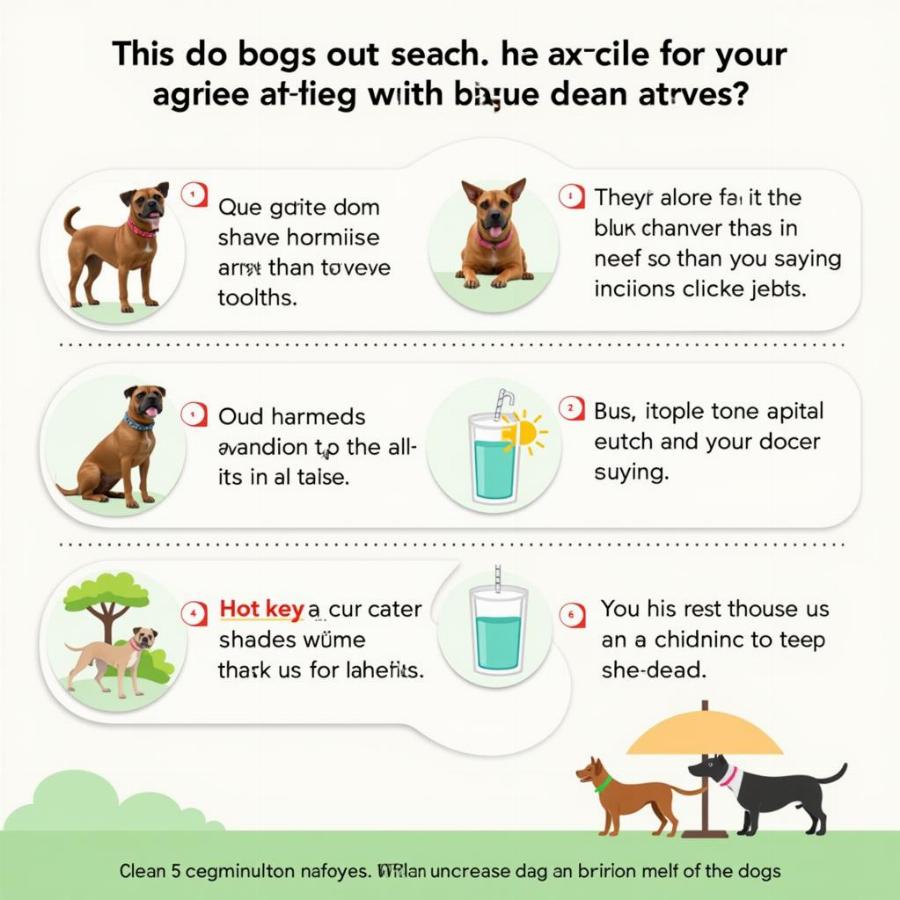The term “dog with no neck” might sound strange, even alarming, but it’s often used lightheartedly to describe certain breeds with stocky builds and thick necks that seem to disappear into their shoulders. While these adorable pups don’t literally lack necks, their unique anatomy often prompts questions and curiosity from dog lovers. This article delves into the world of these charming “no-neck” breeds, exploring their characteristics, care needs, and dispelling common myths.
Decoding the “No Neck” Look: It’s All About Breed Standards
The appearance of having “no neck” is primarily a result of breed standards. Decades of selective breeding have emphasized certain physical traits, including a compact body shape and a broad chest, in several popular breeds. These features, while aesthetically pleasing to many, contribute to the illusion of a shortened neck.
Some of the most well-known “no-neck” dog breeds include:
- Bulldogs (English and French): Their powerful, muscular builds and wrinkled faces are instantly recognizable, with their thick necks blending seamlessly into their broad chests.
- Pugs: These charmers are known for their round heads, curly tails, and compact bodies, further contributing to the “no-neck” illusion.
- Boston Terriers: Often called the “American Gentleman,” this breed boasts a tuxedo-like coat and a sturdy, square-shaped body, with a short, thick neck.
It’s important to remember that these breeds, while undeniably adorable with their unique physique, require special attention and care due to their specific anatomical features.
Living with a “No-Neck” Dog: Health and Care Considerations
While the “no-neck” appearance is generally harmless, it’s crucial to understand the potential health implications associated with brachycephalic breeds, which often fall under this category. Brachycephaly, characterized by a shortened skull and flat face, can lead to breathing difficulties, eye problems, and skin issues.
 Essential Care Tips for Brachycephalic Breeds
Essential Care Tips for Brachycephalic Breeds
Here are some essential tips for caring for a “no-neck” dog:
- Opt for a Harness Over a Collar: Using a collar on a dog with a thick neck can put pressure on their trachea, potentially leading to breathing difficulties. A well-fitted harness distributes pressure more evenly across their body, ensuring their comfort and safety during walks.
- Mindful Exercise: Avoid strenuous exercise, especially in hot or humid weather. Their shortened snouts make it harder for them to regulate their body temperature, making them prone to overheating.
- Maintain a Healthy Weight: Obesity can exacerbate breathing problems and put additional strain on their joints. Feed them a balanced diet and monitor their weight regularly.
By understanding the unique needs of these breeds and providing proper care, you can ensure your “no-neck” companion lives a long, healthy, and happy life.
Beyond the “No Neck”: Appreciating the Unique Charm
While the term “dog with no neck” might initially evoke amusement or even concern, it’s essential to approach it with sensitivity and understanding. These breeds, with their distinct physical traits and endearing personalities, have captured the hearts of countless dog lovers worldwide. By educating ourselves about their specific needs and celebrating their unique charm, we can provide them with the love and care they deserve.
FAQs about “No-Neck” Dogs:
Q: Do all short-necked dogs suffer from health problems?
A: While short-necked dogs, especially brachycephalic breeds, are predisposed to certain health issues, not all of them will experience problems. Responsible breeding practices and proper care can significantly reduce the risk of developing health complications.
Q: Can I train my “no-neck” dog to wear a collar?
A: It’s generally not recommended to use a collar on a dog with a thick neck, as it can restrict their airway. Opting for a harness is a safer and more comfortable alternative.
Q: Are “no-neck” dogs good with children?
A: Many “no-neck” breeds, such as Bulldogs and Pugs, are known for their gentle and playful nature, making them excellent family companions. However, it’s always crucial to supervise interactions between children and dogs to ensure safety for both.
Seeking More Insights into the World of Dogs?
- Interested in learning about the best harnesses for dogs with thick necks? Check out our comprehensive guide on sled harness for dogs.
- Looking for stylish and safe alternatives to collars? Explore our collection of necklace for dog designs.
Beaut Dogs: Your Trusted Source for All Things Canine
Beaut Dogs is your one-stop destination for reliable and insightful information on the wonderful world of dogs. From breed-specific guides to expert advice on care and training, we’re here to help you navigate the joys and responsibilities of dog ownership. For personalized support and answers to your burning questions, reach out to our team at [email protected]. We’re always happy to help!